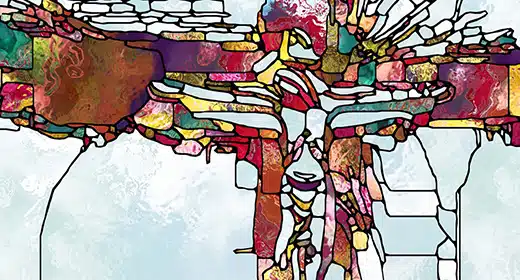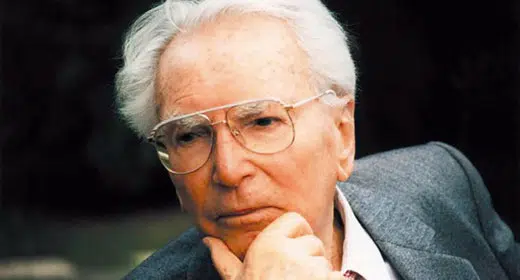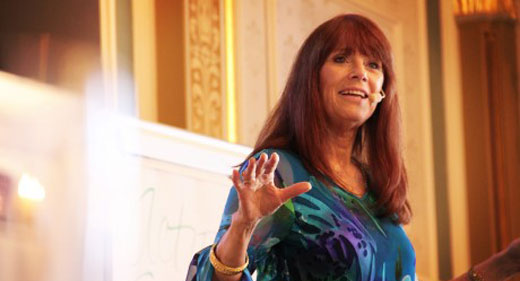by Annamarie Adkins: TIJUANA, MEXICO, APRIL – The secular press recently was full of articles on how Mother Teresa had a “crisis” of faith for decades, but the untold story is how Mary sustained Mother Teresa during that time.

For insight, ZENIT turned to Missionary of Charity Father Joseph Langford, cofounder with Mother Teresa of her community of priests, the Missionaries of Charity Fathers, and author of “Mother Teresa: In the Shadow of Our Lady,” published by Our Sunday Visitor.
Father Langford told ZENIT how Mother Teresa clung to Our Lady throughout her dark night, and how we can grow closer to Mary by following Mother Teresa’s example.
Q: What made you decide that now would be a good time to tell this part of Mother’s story?
Father Langford: The decision to publish “In the Shadow of Our Lady” and to reveal more of Mother Teresa’s inner life grew out of the convergence of two events: the 10th anniversary of her passing, and the recent controversy over her “dark night” of soul.
Given the confusion being created around Mother Teresa and her legacy, it seemed important to reveal another dimension of the true light and beauty of God’s work in her soul — a light that shone all the more brightly through her heroic faith.
Q: How would you describe Mother’s periods of darkness, and what do you think about the recent controversies over her “dark night?”
Father Langford: Contrary to reports in the press, Mother Teresa did not suffer a “crisis” of faith. In fact, her struggle was not with faith at all, but with the “loss of feeling” of faith, with the loss of a felt sense of the divine. As she stepped out of the convent and into the slums of Calcutta, what had been her usual consolation in prayer abruptly ended.
Though she would not understand it until later, she was being asked to share the same inner darkness, the same trial of belief suffered by the poor and destitute — and to do so for their sake, and for the love of her Lord.
She was allowed to feel as though God was absent, and at first she agonized at the disconnect between her emotions and her belief — though never did her lack of feeling become lack of faith.
In fact, her dark night revealed the hidden depth of Mother Teresa’s faith in a way that any lesser challenge could not. Her darkness not only allowed her to exercise her extraordinary faith to the full, it allowed us — modern disciples too often of “little faith” — to discover the true dimensions of which faith is capable, even under duress, even in the night.
She would want to encourage us to do the same in our own Calcutta, in our own dark night: Instead of allowing our trials and pain to become a prison, we can, as she did, make our pain a bridge into the pain of others, a bond of solidarity, a catalyst for charity.
Q: How did her relationship with Mary assist her in these times of trial?
Father Langford: Just as the Israelites were given a column of fire to lead them by night, so Mother Teresa was given her own guiding light through the night of faith, in the person of the Virgin Mary.
The gift of Jesus’ mother — given to St. John on Calvary, and to disciples and saints through the ages — strengthened Mother Teresa in carrying her own pain, and in tending to the pain of the poor.
Our Lady would help her to not only believe in the night, but to love in the night — to transform the mystery of the cross, both within her and around her, into seeds of resurrection.
As it was Our Lady who brought St. John, alone among the Twelve, to stand faithfully at Calvary, so it was Our Lady who would bring Mother Teresa through the sea of suffering opened before her, that she might shine the light of God’s love on the poor.
Q: What did you learn about the Blessed Mother from Mother Teresa?
Father Langford: The book is a compendium of what I learned of Our Lady over the years, from watching and listening to this Saint of the Gutters. It is a simple apologia for Our Lady’s role, wrapped not in polemics, but in the humble sari of one of the gospel’s most credible and approachable witnesses.
It is impossible to observe Mother Teresa’s faith without being reminded of the faith of Our Lady. Though her darkness bore other names and other dimensions, Mary of Nazareth lived her own night of faith.
Consider Joseph’s months of doubt; finding no room in Bethlehem; the flight into Egypt; the years of Jesus’ absence from Nazareth; the hours of his agony on the cross; and her own agony as he lie in the grave. From these came the lessons of faith she shared with a young Mother Teresa.
Mother Teresa’s own life, and her sense of the role of the Mother of God, was that of “an ongoing Visitation,” a “going in haste” to bring God to others. This Marian vision was based on Mother Teresa’s own experience, but also firmly rooted in scripture.
The Gospel account of the Visitation in the first chapter of Luke shows obvious echoes of the “visitation” made by the Ark of the Covenant to David, also “in the hill country of Judea.” No one disputes that the Ark carried a special anointing of grace and divine presence, that it was itself a “theotokos” (“God-bearer”), though only made of wood.
Can God not do the same and more, in a latter Testament, with a new and better Ark? Are we scandalized that God can make of flesh what once was? Or has our generation understood “neither the scriptures nor the power of God?”
In the end, Mother Teresa would not be one to argue, but simply to say of this Marian mystery, as she so often did of the mystery of Christ hidden in the poor: “Come and see.”
Q: How did Mother Teresa’s visions as a young woman affect her Marian devotion?
Father Langford: Sometime in 1947, after months of extraordinary grace in which Jesus explained in detail the mission she was to undertake, Mother Teresa was granted a vision which represented the major elements of her new call.
She was shown a “large crowd” of poor of every kind, “covered in darkness” — a darkness she herself would soon share. Our Lady was standing in the midst of them, claiming them as her children.
Mother Teresa saw herself “as a little child,” standing directly in front of Our Lady, so close as to seem one thing with her, literally enveloped by her presence. What Mother Teresa saw in vision that day would indeed come to pass, as her mission became a kind of “extension of Our Lady” at the Calvaries of this world.
When asked by her spiritual advisor how she intended to accomplish the impossible task Jesus had asked of her, Mother Teresa replied simply that she was placing “all her confidence” in the presence of Our Lady.
She never doubted, inspired by the same faith that sustained Our Lady in her darkest hour on Calvary, that the Son of God was hidden beneath the “distressing disguise” of those who shared his Passion. As Jesus proclaims in Matthew’s Gospel, and as Mother Teresa loved to repeat: “Whatever you do to the least … you did it to me.”
From her life-changing vision of 1947 until her death, Our Lady would be Mother Teresa’s constant reference, her model, and her unflagging support.
Q: In your book, you talk about the four important “attitudes of soul necessary for Our Lady to intervene in our lives.” Can you briefly describe these, and how Mother radiated these in her life and work?
Father Langford: The first prerequisite in our relationship with Our Lady is an attitude of littleness and poverty of spirit, an attitude that opens the gates of the kingdom. As the Gospel insists: “Unless you change and become like children” (Luke 18:17).
This was a keynote of Mother Teresa, and of those chosen by Our Lady in all her apparitions.
The second prerequisite is an attitude of trust, of simple faith in the presence, the power, and role of Our Lady in God’s plan, relying on her intervention and intercession with the trust of a child.
Thirdly, Our Lady, who proclaimed “Let it be done to me according to your word,” asks the same humble obedience, the same docility and suppleness of spirit of all her children that we see in Mother Teresa, and in those who lived in intimacy with Mary.
The fourth prerequisite in coming closer to Our Lady is a contemplative attitude, both in prayer and in life — a sense of childlike wonder at the majesty of his being and the beauty of his creation, and an ability to marvel at his gifts and blessings.
Q: How did the Blessed Mother bring Mother Teresa, and how can she bring us, closer to Christ?
Father Langford: Mother Teresa discovered that Our Lady’s presence alongside her in the slums purified things, no matter how sullied, and beautified things, no matter how uncomely. She opened the blackest of horizons to the light of God’s grace.
For Mother Teresa, Our Lady was like the cloud that came down on the meeting tent in the Old Testament, bringing with it a sacred atmosphere filled with God’s presence, offering a refuge that purifies and transforms everything, divinizing us and preparing us for the encounter with God.
Mother Teresa was convinced that in this sacred space all that God wanted from her would be realized. In Our Lady, Mother Teresa found a privileged path into the mystery of Trinitarian love, given in Jesus.
For her, Our Lady represented mankind’s “maximum response” to God, our highest and fullest answer to his invitation to love and be loved. As Our Lady became St. John’s solution to the dilemma of human weakness, as he scaled the mount of Calvary, so Our Lady was Mother Teresa’s solution to the same dilemma, as she plumbed the depths of Calcutta’s slums.
Mother Teresa would invite us, as she invited her Sisters, to allow Our Lady to become our solution as well, as we face the trials and demands of following Jesus, “picking up our cross every day,” in our own hidden Calcuttas of the heart.
With her whole heart — and with what extraordinary results — Mother Teresa heeded, and encourages us to heed, Jesus’ solemn invitation “Disciple, Behold your Mother.”








































